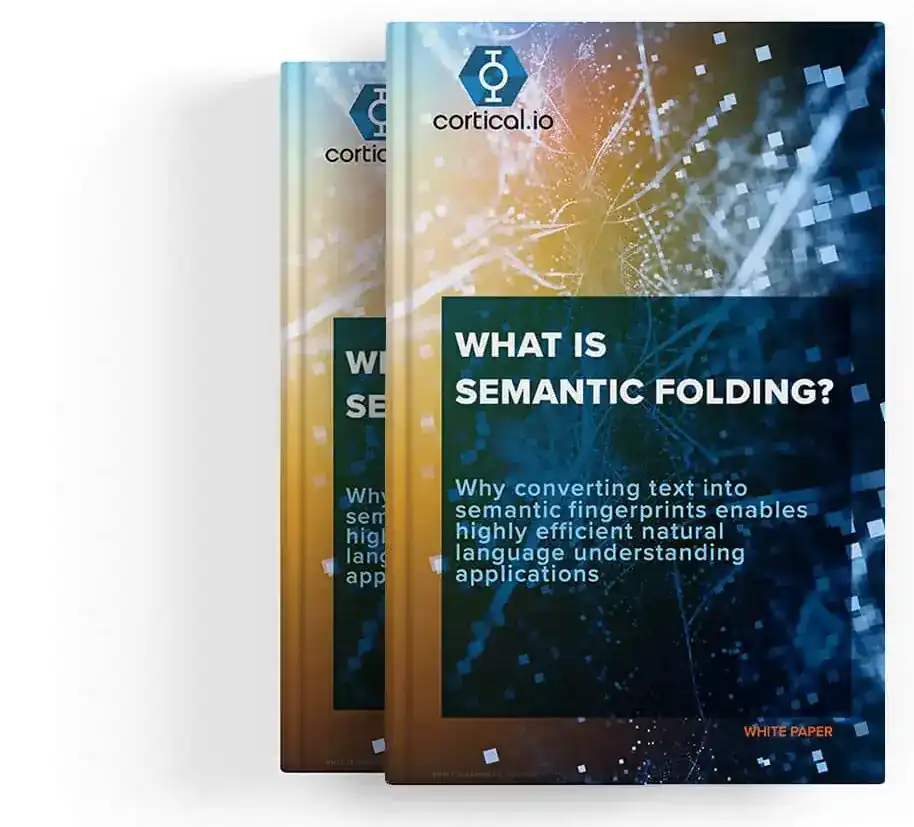Unlock efficiency with semantic fingerprints
Transform text into semantic fingerprints for pinpoint accuracy with minimal computing resources
Semantic fingerprints capture the different meanings of words based on thousands of parameters and form clusters of similar contexts. For document processing tasks like classification and semantic search, the system just needs to measure semantic overlaps between semantic fingerprints - a highly efficient computational approach that powers the processing of very large amounts of text with less computing resources.
TEST DRIVE BEFORE YOU SUBSCRIBE
Semantic Fingerprint
Convert the input text into a semantic fingerprint. First, each word is converted into its fingerprint representation. Then these word representations are aggregated and sparsified to create the text fingerprint.
Game-Changing approach to Natural Language Processing
With semantic fingerprints, you can:
- Compare words, sentences and whole texts to each other.
- Perform meaning-based classification of text and semantic search by simply measuring the overlap of semantic fingerprints.
- Train custom models with little training data in an unsupervised manner.

Classification
Instead of training the classifier with many labeled examples, one reference fingerprint can be used to describe a class. This can be used for real-time classification of emails or social media posts, or for screening candidate profiles for example.
Semantic search
With semantic fingerprints, queries in natural language can be directly compared with the indexed documents, improving both recall and precision. This can boost intranet search.
Model training
With semantic fingerprints, language models can be trained with comparatively little training data and computing resources while achieving similar accuracy levels as with transformers.
Customer Voices
How TBS business school is using semantic fingerprints to analyze large amounts of news
Transparent and fair pricing
Get started for free!
Ready to start? Whether you want to test our API or integrate it in an enterprise application, we have the right plan for you.
SF API - Free Plan
- Up to 500,000 requests / month
- Max. 15 requests / second
Custom Plan
- Unlimited requests
- Maximum throughput
For custom plans, please contact us
Sparse distributed representation of text
Learn more about semantic fingerprints
Semantic fingerprints encapsulate all meanings associated with a text in a topographical representation where similar meanings are placed close to each other.
Semantic fingerprints allow direct comparison of the meanings of any two pieces of text, showing thousands of semantic relations.
If two semantic fingerprints look similar, it means that the texts are semantically similar too.


